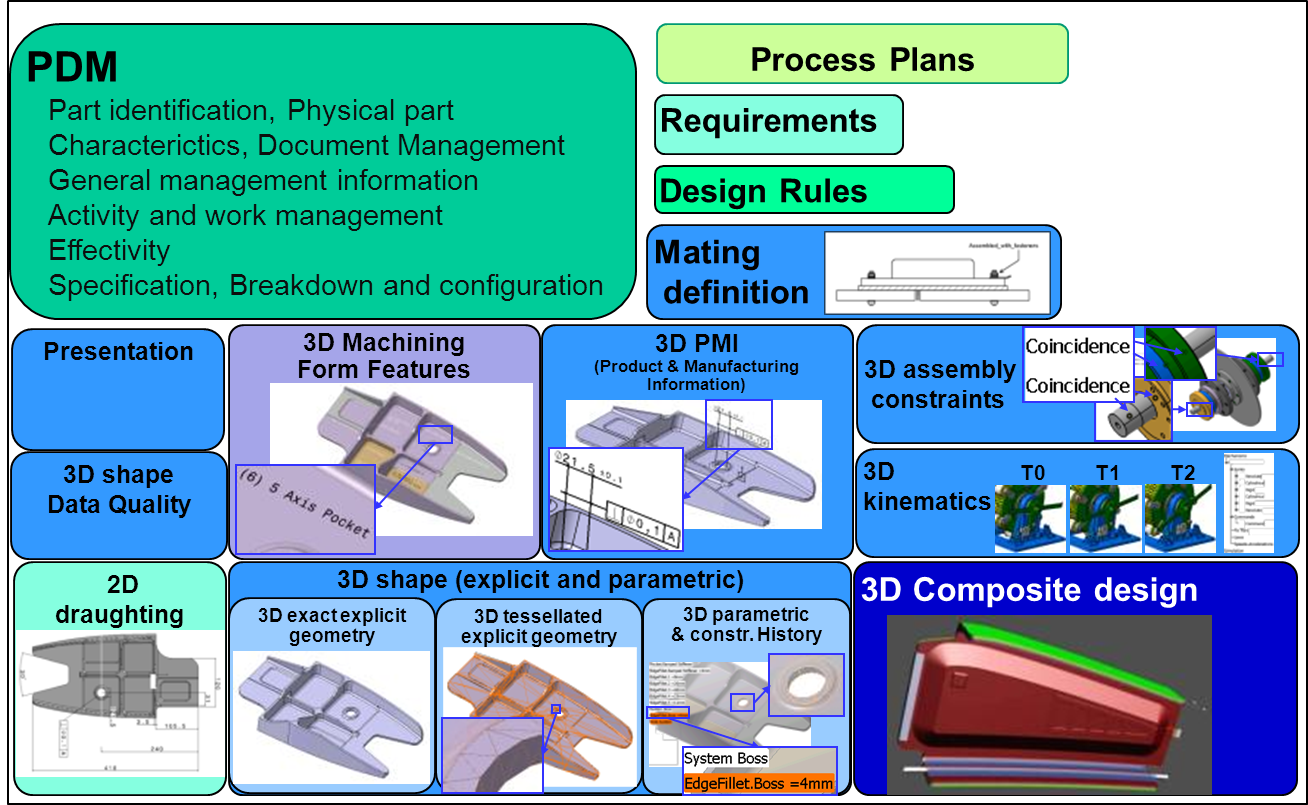Overview of AP242 edition 1 information model
This page provide the overview of the type of product information of AP 242 editon 1 standard, of the capabilities of the Business Object Model of AP242 ed.1 and of the 2 implementation formats (P21 AIM and P28 XSD BO model). Main interdependicies with other standards can be found at "Other related standards".
The overview of the content is described and illustration of this content is provided in the two following figures:

Overview of Business Object model capabilities
AP242 BOM is based on a set of capabilities, organized according the following figure (version available 21st of September).
An XML schema is derived from the BO Model, which will be used as an implementation model to support data exchange related to PDM systems and associated services, as described in the following figures.
AP242 edition 1 main goal is to succeed in merging AP203 and AP214, and to extend them with some of the needed complementary capabilties which are needed, taking into consideration only what can be reasonably addressed in the 3 years long maximum duration of an ISO standardization project, and the timeframe related to stakeholders roadmaps.
Some extensions are already identified and planned for the second edition.